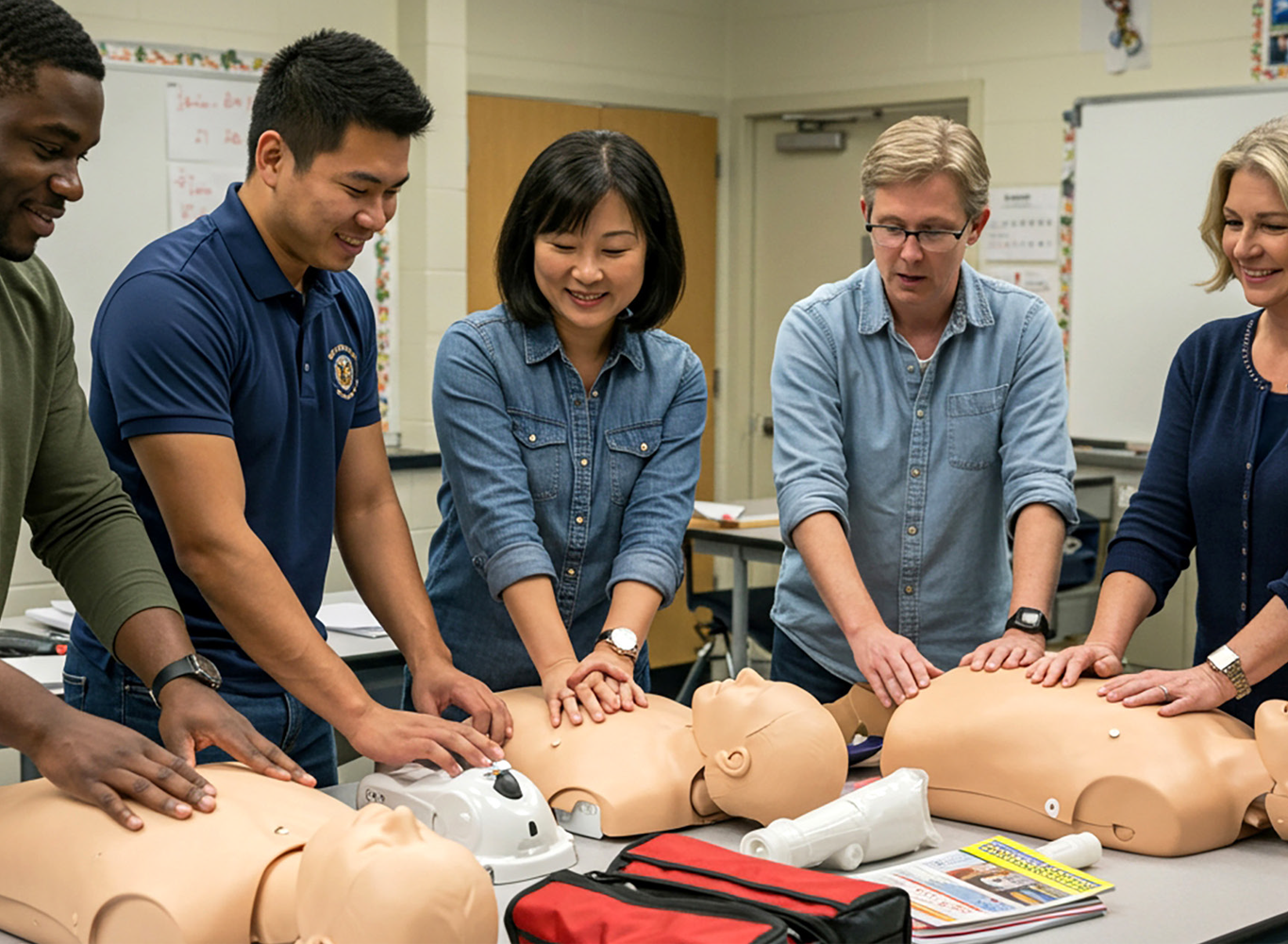
From Classrooms to Crisis Response
Touro’s NYMC Center for Disaster Medicine Leads Schools in Emergency Preparedness

You’re a high school teacher. A 16-year-old student collapses, unconscious. His pupils are dilated, his breathing shallow and his classmates stand frozen. You have seconds to act. What do you do?
If you were part of the Center for Disaster Medicine’s Emergency Response Training Program, you’d know.
Every day, schools face emergencies—some that make headlines, some that don’t. Those on the scene—teachers, principals, custodians, security guards—often face split-second, high-impact decisions. In those circumstances, preparedness can make the difference between life and death.
Recognizing the growing need for emergency preparedness training, the Center for Disaster Medicine (CDM) at Touro’s New York Medical College partnered with the Yonkers City School District for a pioneering pilot program. Over the course of the 2023–24 school year, nearly 4,000 school professionals—across all 29 district schools—received hands-on training tailored to real-world emergency scenarios. From mass shootings and opioid overdoses to fires, floods and terrorist threats, this customized program equipped staff, parents and community members with the tools to respond quickly and effectively to a broad range of crises.
Think Fast: On-the-Job Training
“Nearly every teacher has faced an emergency situation,” said Dr. David Markenson, director and co-founder of the CDM. “Before the training, most admitted they felt unprepared to act. But after completing the program, they reported feeling confident and ready to step in until first responders arrive.”
This sense of empowerment is central to the mission of the CDM, the first civilian resource of its kind in the nation. Since its inception in 2005, the CDM has pioneered efforts to prepare vulnerable populations—such as children, the elderly and the disabled—for disasters. Through cutting-edge research, hands-on training and comprehensive educational programs, the CDM has established itself as a vital multidisciplinary resource, bridging academic expertise with community-focused emergency preparedness.
The success of the Yonkers pilot program speaks to the far-reaching impact of the CDM’s work. With overwhelming support from educators and school leaders, the CDM won a $250,000 grant to expand the program into additional New York districts.
“There isn’t a month that goes by without a New York school facing a life-threatening event,” said Dr. Markenson, an internationally recognized expert in all aspects of disaster medicine, public health preparedness and operational medicine. “But when people are properly trained and prepared, they don’t just react—they respond with speed and precision, following a plan already in place. That’s when lives are saved.” These plans, he emphasized, aren’t just for major crises. “Even small emergencies—like a shop-class injury or a power outage—require preparedness. It’s always key.”
Ready for the Real World
When he heard about the pilot program, Jeremy Rynders, principal of Saunders Trades & Technical High School in Yonkers with 1,200 students across 10 career and trade programs, recognized a great opportunity. “Between the culinary and carpentry programs, and that fact that we’re dealing with teenagers, accidents can happen,” he said. “And we could not have funded a program like this on our own.”
The CDM staff didn’t just train Saunders teachers in “Stop the Bleed,” CPR, AED and basic first aid—they went a step further by certifying them to train others, including their own students. “It was game-changing,” said Rynders. “Now, if something happens, we’ll have 25 students in the class who know exactly what to do, not just the teacher. It makes it far more likely that things will turn out well in an emergency.”
Chef Titus Thompson Okumodi, a culinary instructor at Saunders for nearly 30 years, is well aware of the risks that come with the kitchen—from knife mishaps to fires. “My job isn’t just to teach cooking; it’s to make sure my students know how to protect themselves and save lives,” said Okumodi. “Now, instead of just showing safety videos, we’re giving our students hands-on certifications. It not only makes them safer, it gives them a real advantage in the industry. They’re leaving the classroom more prepared for the real world.”
Grounded in Reality
When developing large-scale emergency drills, Emily Kaplan, DrPh,, assistant director for the CDM, guides participants through simulations using their school’s actual floor plans—much like a strategic board game—helping them map out evacuation routes, gathering points and locations of essential supplies. As a result, one Yonkers school relocated its Narcan supply to ensure faster access during potential opioid crises. “It’s all about keeping it real,” she said.
To further enhance its training, the CDM uses state-of-the-art tools—ranging from “Mattie,” the advanced female trauma simulator, to life-like pediatric manikins, live actors and anatomical models that replicate bleeding and pressure techniques.
“In an emergency, every second counts,” said Dr. Markenson. “The more educated and prepared the adults are, the better off the children will be. And when it comes to school safety, that’s our ultimate goal.”

